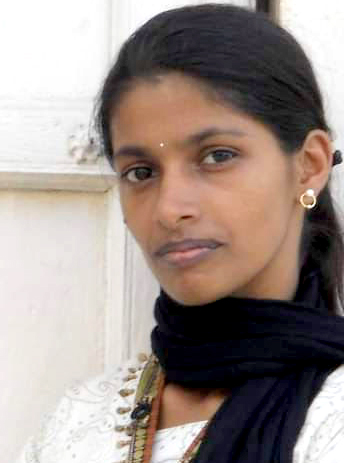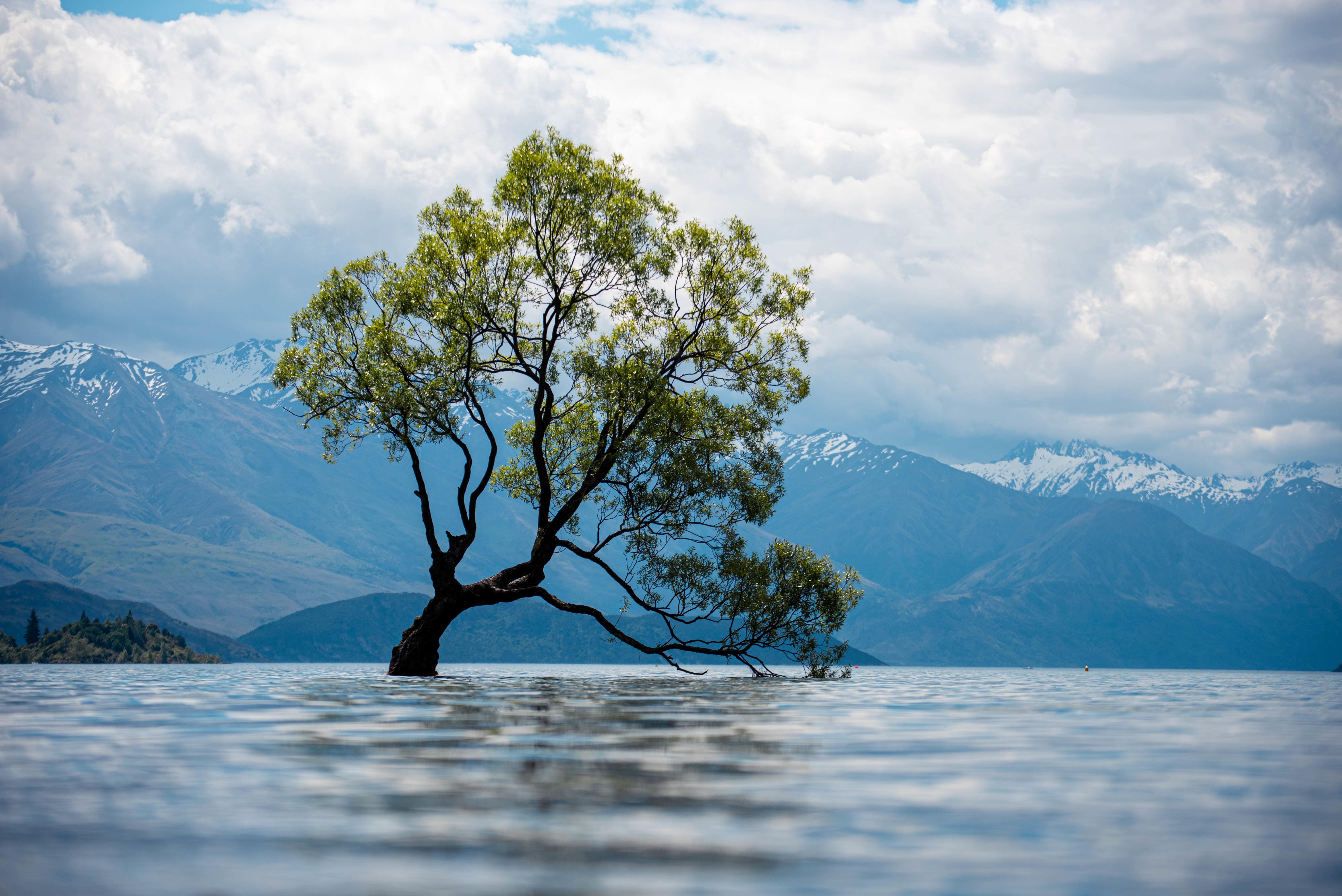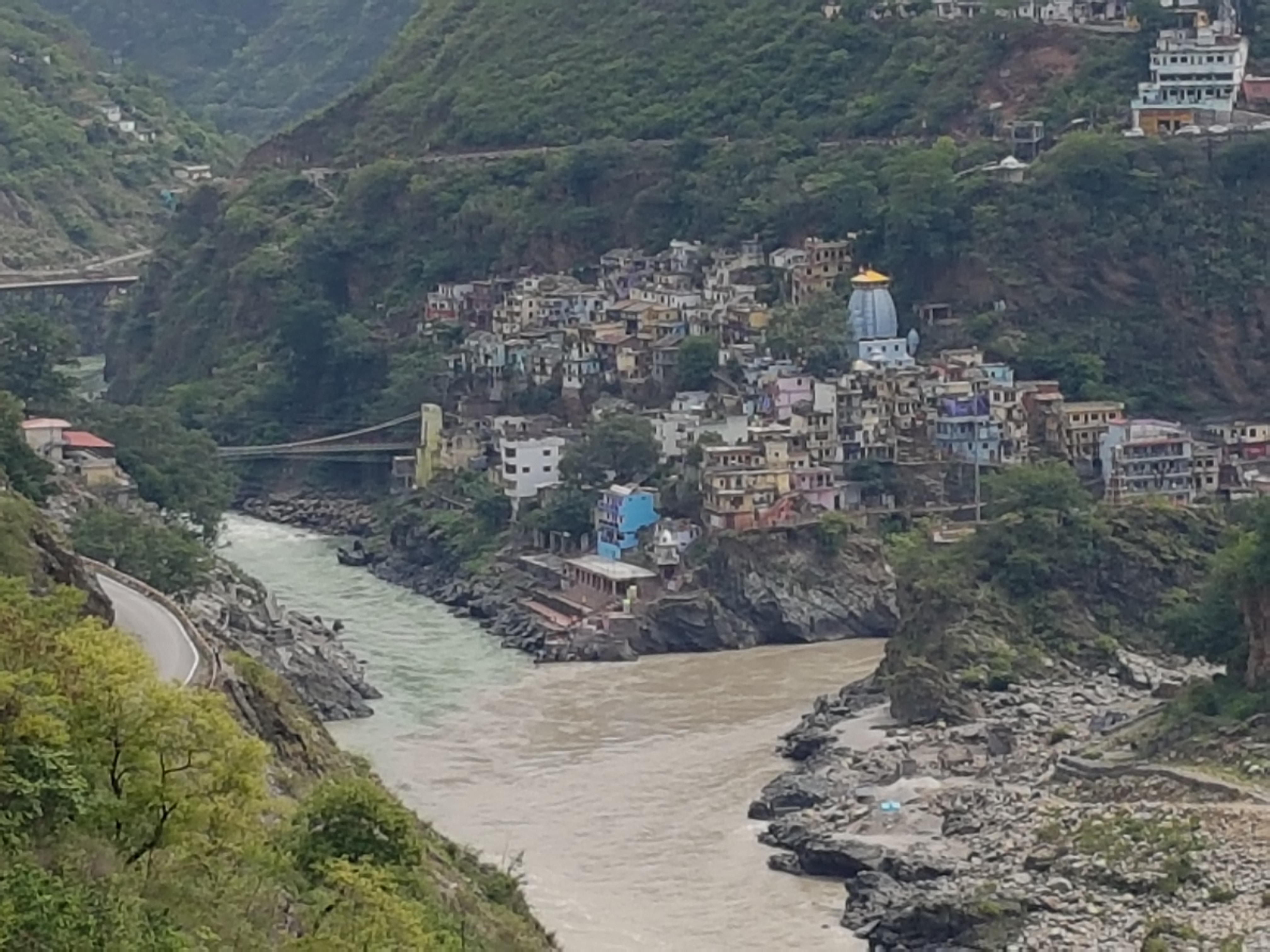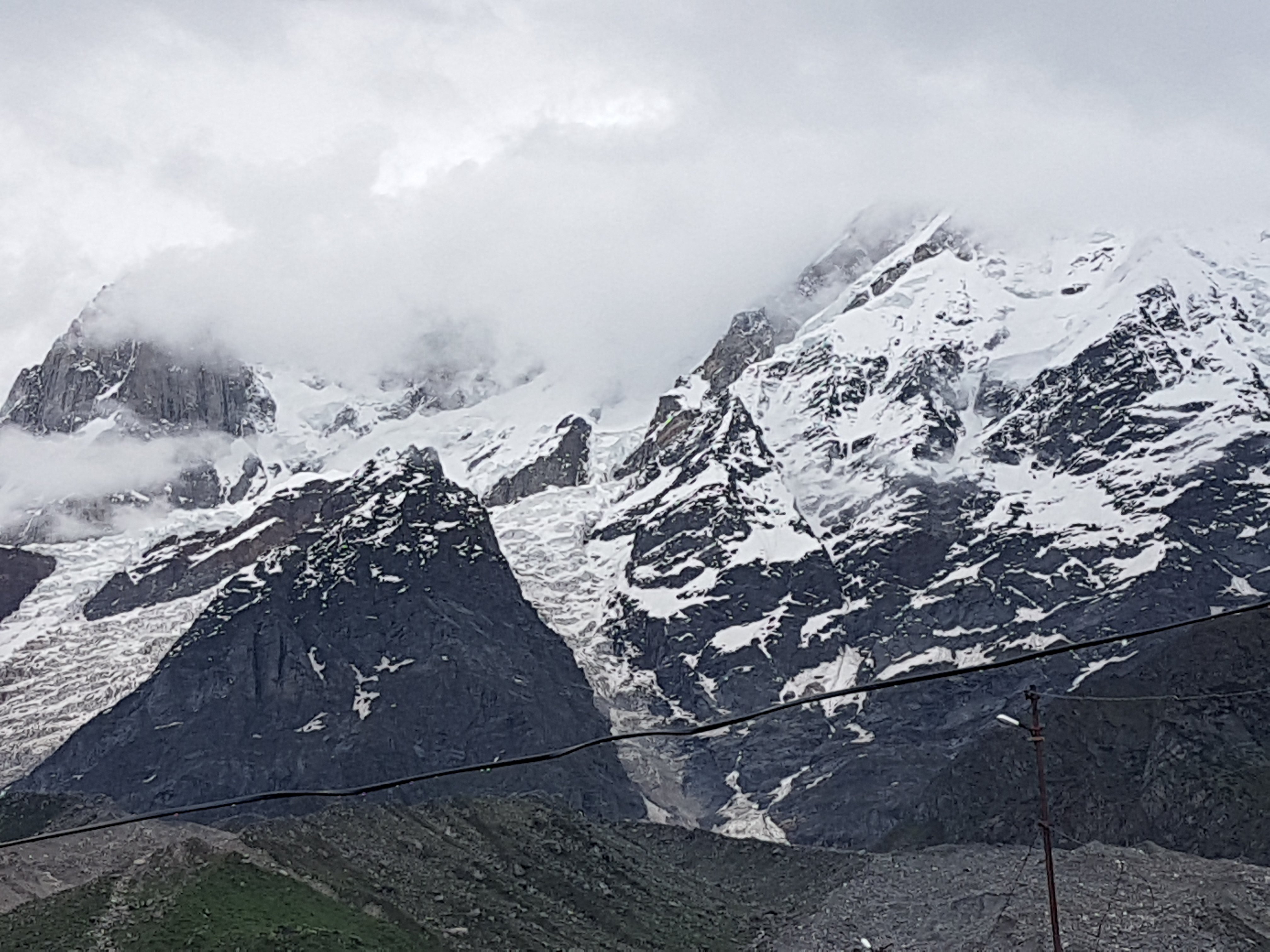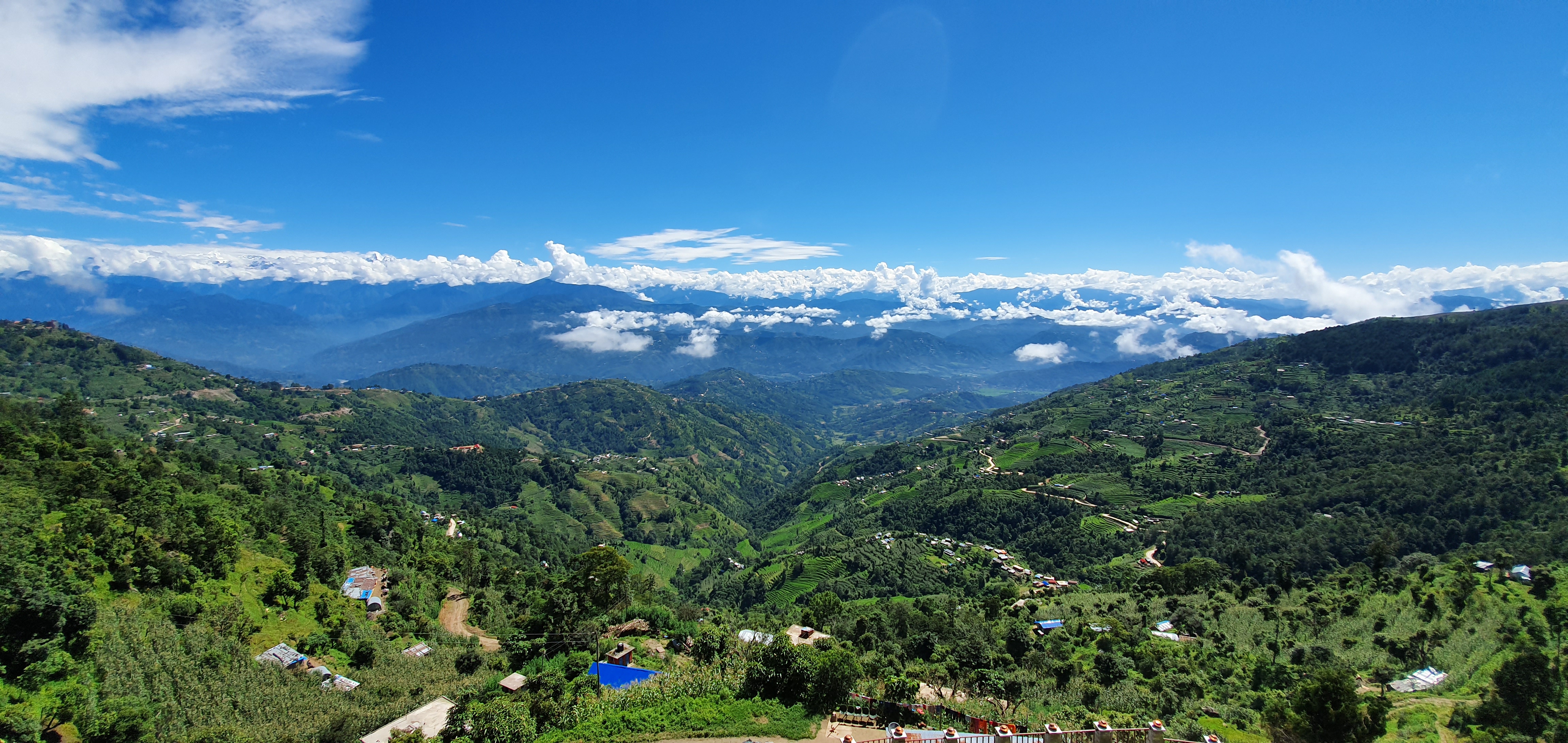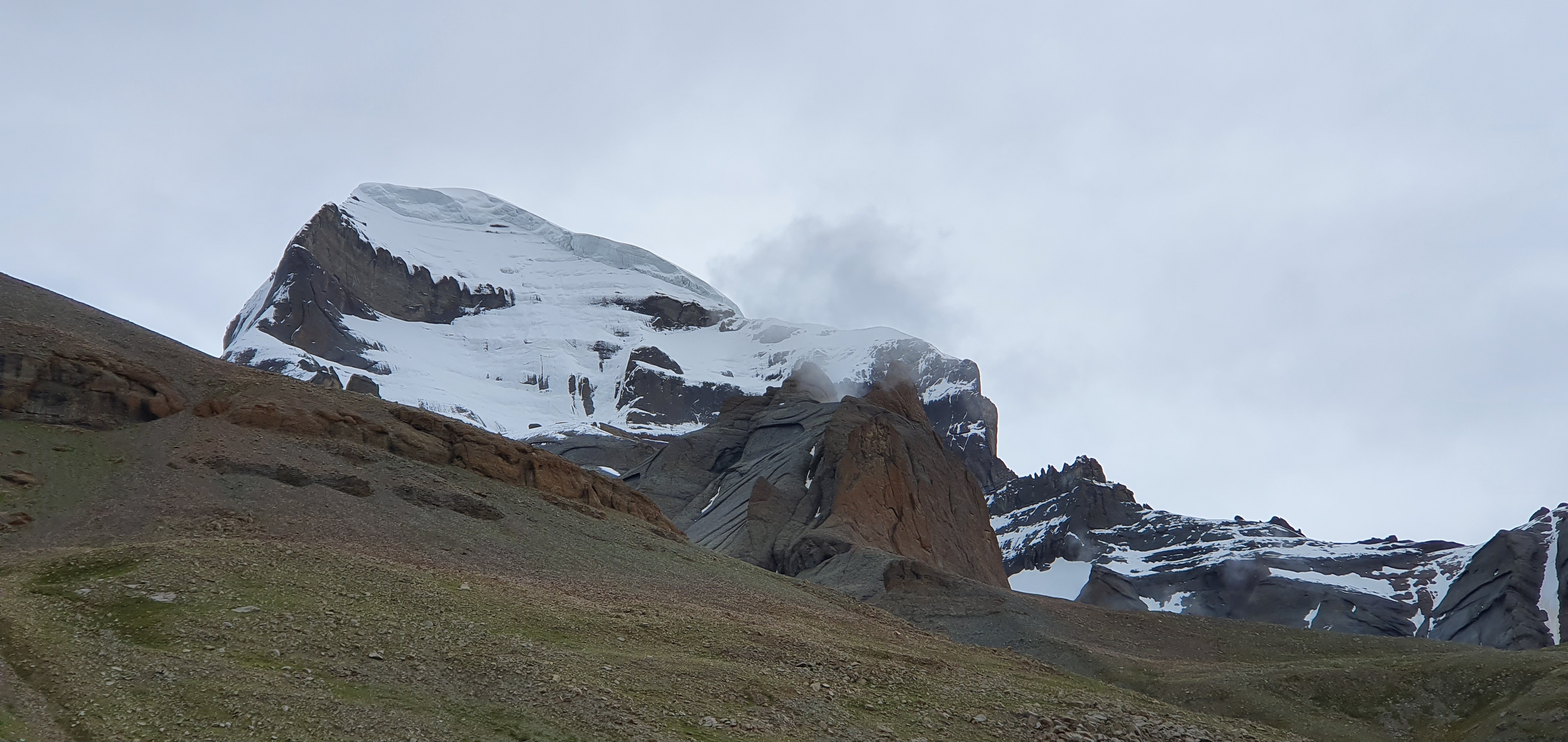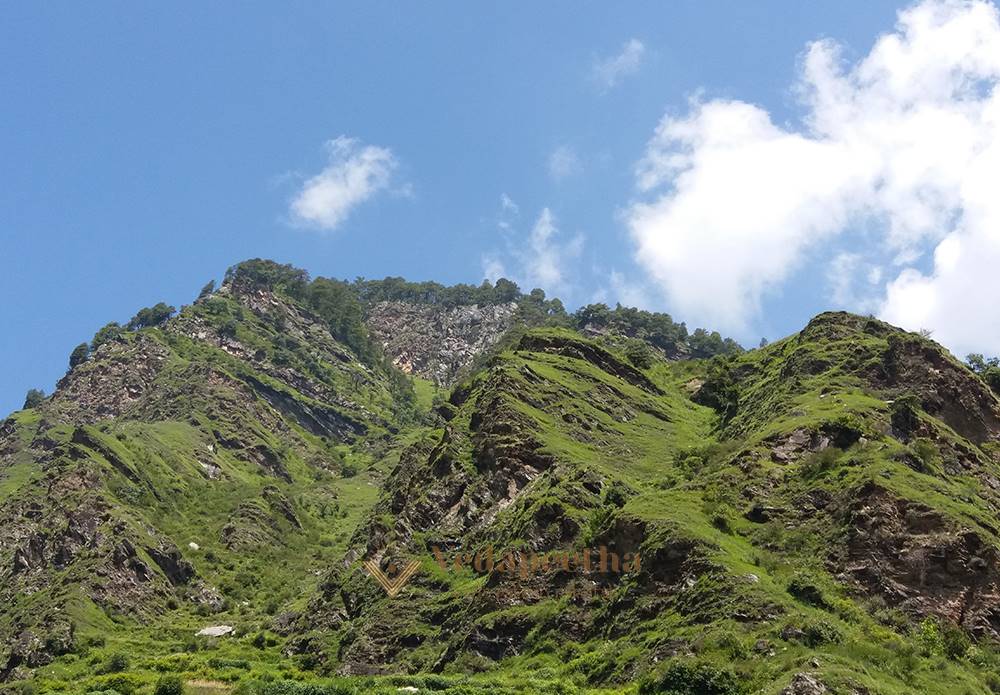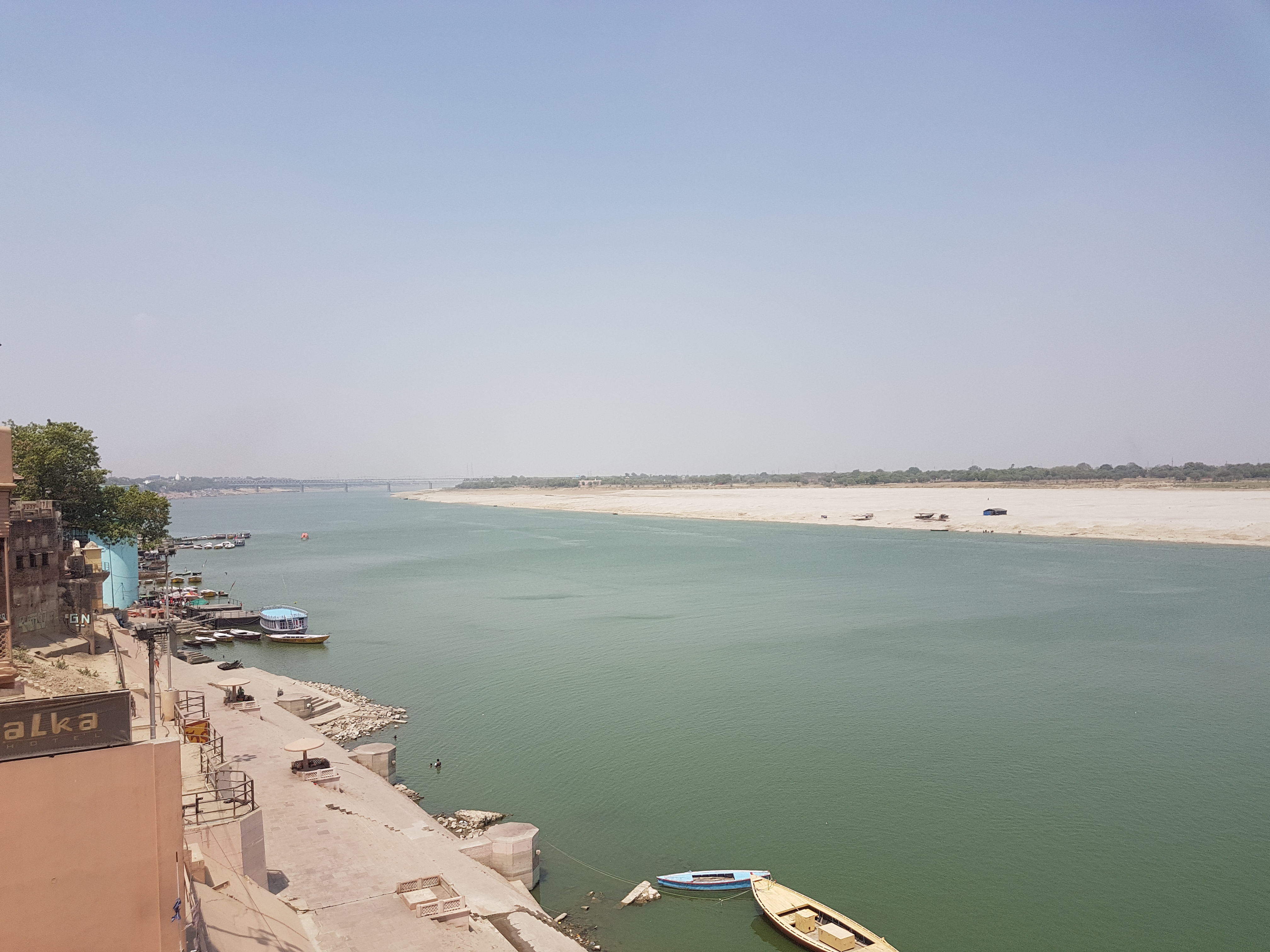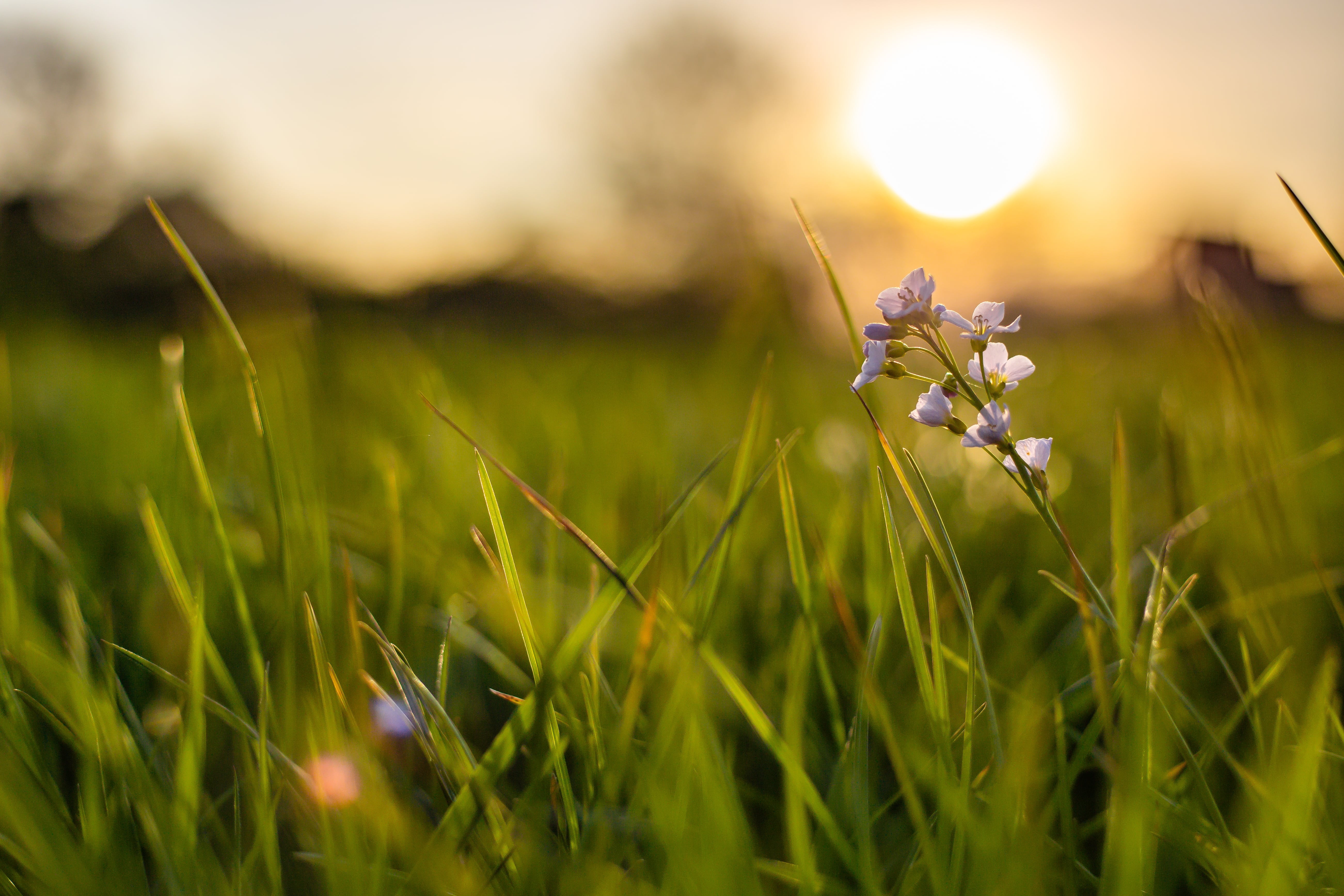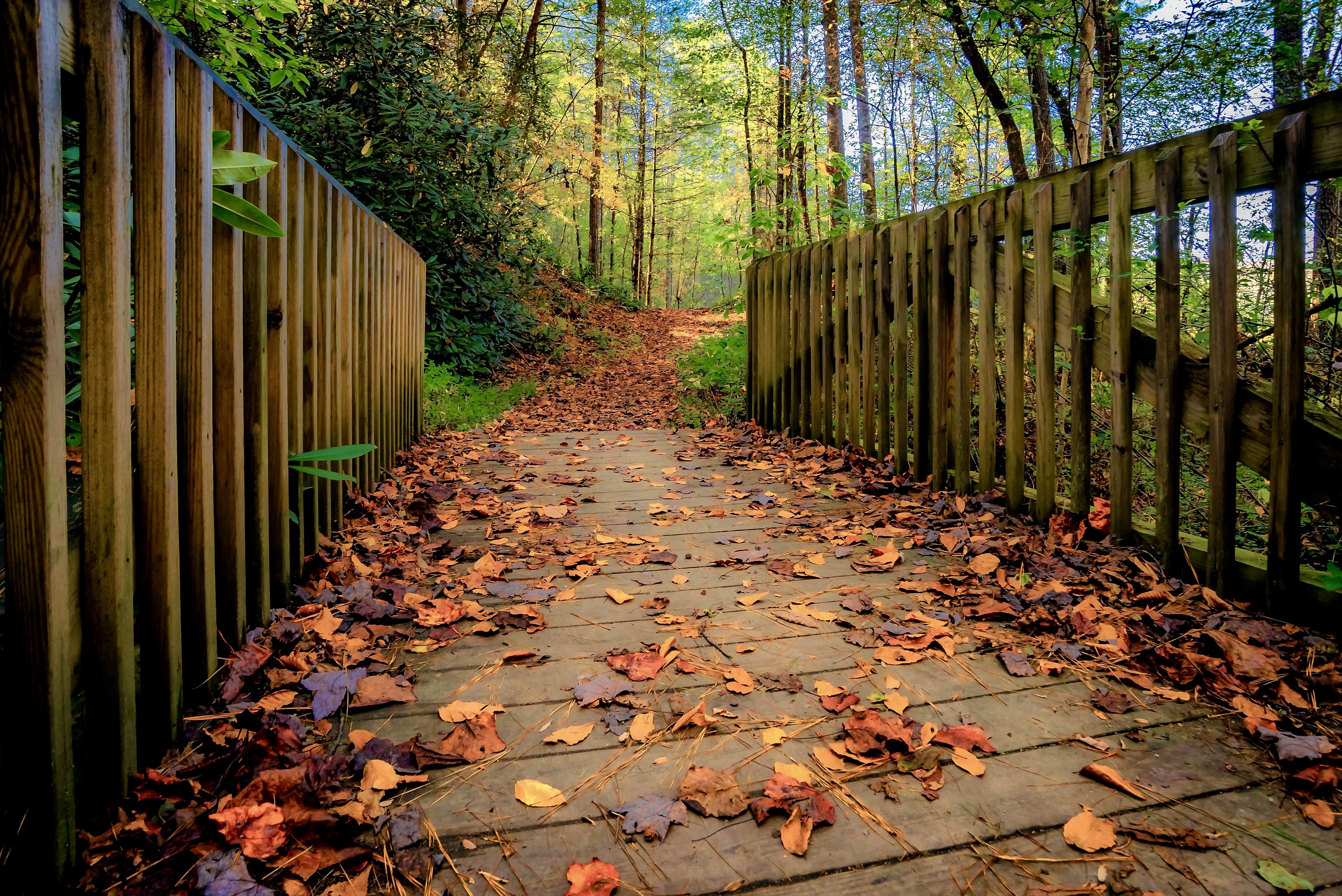Caraka Samhita
RTUCARYA IN CARAKASAMHITA
Ayurveda is one of the indigenous medicinal systems of India.It describes the theories for longevity and remedies for various diseases. Carakasamhita is a major classical treatise in Ayurveda. It is the redacted form of Agnivesatanra of Agnivesa. According to Carakasamhita the tradition of Ayurveda started form Brahma and passed through DaksaPrajapati and Indra to Bharadwaja or Atri who handed it down to Atreya. The theories propounded byAtreyaare faithfully compiled byhis disciple Agnivesa in the name of Agnivesatantra. Later this treatise refined and enlarged by Caraka then it became known asCarakasamhita. Thus this treatise represent different stratum of time. Scholars assigned 1000 B.C as the period of Agnivesatantra. This treatise may become asCarakasamhitain between 5th century B.C to 2nd century C.E. Carakasamhitaagain went through redactions and enlargement by Drdahabala in 4th century C.E.
Carakasamhitais divided into 8 sections called Sthana s and chapters. The sthana s are named as –Slokasthana (Sutrasthana), Nidanasthana, Vimanasthana, Sarirasthana, Indriyasthana, Cikitsitasthana, Kalpasthana and Siddhisthana[1]. the subject matter dealt in these eight sthana s are basic principles of Ayurveda, Diagnosis, evolution of human body, signs of fatal diseases, treatment, pharmaceutical preparations and its successful management.
Sutrasthana
This sthana deals with the origin, definition, importance and the basic principles of Ayurveda, Daily routine and seasonal routine for
[1]तन्त्रस्यास्याष्टौ स्थानानि, तद्यथा- श्लोकनिदानविमानशरीरेन्द्रियचिकित्सितकल्पसिद्धिस्थानानि।
Carakasamhita, Sutrasthana, 30, 33.
healthy longevity and food suitable for each period of time etc. are also described in this sthanaSutrasthana includes 30 chapters.The first 28 chapters have been grouped in topic wise having four chapters in each group, such 7 groups named Bhesajacatuska, Swasthacatuska, Nirdesacatuska, Kalpanacatuska, Rogacatuska, Yojanacatuska and Annapanacatuskaand the last two chapters named Dasapranayataniyam, and Arthedasamahamuliyam all together form 30 chapters in this sthana.
Nidanasthana
This sthana deals with the methods of diagnosis of various diseases in Ayurveda.Nidanapurvarupa, linga, upasaya and samprapti are the five methods of diagnosis.Nidanasthana is divided into eight chapters namely- Jvaranidana, Raktapittanidana, Gulmanidana, Pramehanidana, Kusthanidana, sosanidana, Unmadanidana and Apasmaranidana.
Vimanasthana
This sthana contains topicssuch as six tastes, diet and diseases according to living place, diagnosing disease by the knowledge through Aptopadesa, Pratyaksa and Anubhava, Examining the text, qualities of teacher, student, mode of teaching, the essential details that should know before treatment etc. are also the topics of discussion here. This sthana includes eight chapters namely- Rasavimana, Trividhakuksiyavimana, Janapadoddhvamsaniyavimana,Trividharogavisesavijnaniyavimana, Srotovimana, Roganikamvimana,Vyadhitarupiyamvimana, Rogabhisarijatiyamvimana.
Sarirasthana
Formation of human body, Embryology, Treatment of Pregnant woman, Management of mother and child etc. are the topics in this sthana. This sthana includes eight chapters. They are Kathipurushiyamsarira, Athulyagothriyamsarira Khuddikagarbhavakrantisarira, Mahatigarbhva akrantisarira, Purusavicayasarira, Sariravicayasarira, Sarirasamkhyasarira and Jatisutriyasarira.
Indriyasthana
This sthana describes the different signs of total diseases and death. It includes twelve chapters namely Varnasvariyendriya, PuÀpitakendriya, Parimarsaniyendriya, Indriyanikendriya, Purvarupiyendriya, Katamanisaririyendriya, Pannarupiyendriya, Yasyasyavanimittiyendriya, sadyomar- aniyendriya, ujyotiyendriya and Gomayacurniyendriyam.
Cikitsasthana
Treatment against various diseases and methods of practicing rasayana and vajikarana are the central topics dealt in Cikitsasthana. Itincludes thirty chapters. They are Rasayanadhyaya, Vajikaranadhyaya, Jvaracikitsita, Raktapittacikitsita, Gulmacikitsita, Pramehacikitsita, Kusthacikitsita, Rajayaksmacikitsita, Unmadacikitsita, Apasmaracikitsita, Ksataksinacikitsita, Svayathucikitsita, Udaracikitsita, Arsacikitsita, Grahanicikitsita, Pnndurogacikitsita, Hikkacikitsita, Kasacikitsita, Atisaracikitsita, Chardicikitsita, Visarpacikitsita, Trsnarogacikitsita, Visacikitsita, Madatyayacikitsita, Dvivraniyacikitsita, Trimarmiyacikitsita, Vatavyadhicikitsita, Vatasonitacikitsita and Yonivyapaccikitsita.
Kalpasthana
Kalpasthana deals with the properties of substances, method of collecting medicinal herbs and preparation of various forms of medicines such as kasaya, kvatha, lehya etc. for diseases and evacuation therapies like vamana and virecana. This sthana includes twelve chapters. They are named as Madanakalpa, Jimutakalpa, Isvakukalpa,Dhamargakalpa, Vatsakakalpa, Krtavedhanakalpa, Syamatrivrtkalpa, Caturangulakalpa, Tilvakakalpa, Sudhakalpa, Saptalasankhanikalpa and Dantidravantikalpa.
Siddhisthana
Sidhisthana deals with the successful management of medicines and treatment. It discuss about pancakarma therapyand its method of practising. This sthana includes twelve chapters namely- Kalpanasiddhi, Paacakarmiyasiddhi, Bastisutriyasiddhi, Snehavyapadikisiddhi, Netrabastivyapadikisiddhi, Vamanavirecanavyapatsiddhi, Bastivyapatsiddhi, Prartayogikasiddhi, Trimarmiyasiddhi, Bastisiddhi, Phalamatrasiddhi and Uttarabastisiddhi.
These are the sthanas and adhyayas in Carakasamhita. In a nutshell this treatise elucidate that one can attain healthy longevity by leading a life style blended with nature. Rtucarya, described in sutrasthana of Carakasamhita, is amode of life according to six seasons.
Rtucarya (Seasonal Regimen)
Rtucarya or life in accord with the seasons isdealt with in thesutrasthana of Carakasamhita. This is discussed in the chapter onAsitiya, which includes in the swasthacatuska of sutrasthana. The seasons are six in number. They aresisira, vasanta, grisma, varsa,sarat and hemanta. These six seasons have been divided into two periods as Adana and Visarga on the basis of the movement of sun. The period when the sun progress its movement to northwards of the equator is known asadana (receiving).This movement of sun characterises the seasons sisira, vasanta andgrisma. When the sun moves south of the equator is known as visarga, which period coincides with the seasons from varsa to hemanta[2].
Adana period is characterised by dryness, sharpness and roughness in Sisira,Vasanta and grisma in progressive order. So the use of katu, tikta, ruksarasascause weakness in human beings should be avoided. In visarga period the sun is facing towards south and nature is cooled down by rains. The rasas like amla, lavana and madhura increase in progressive order with consequent promotion of strength in human beings[3].
Hemanta (Pre-Winter Season)
[2]Carakasamhita, Sutrasthana, 6, 4.
[3]Ibid; 6, 6-7.
During hemanta one should use the unctuous, sour and salted soup of the meat of fatty aquatic-marshy animals, burrow dwelling animals and prasaha types of animals. Drinking wine vinegar and honey is also beneficial in this period. Regular use ofmilk and sugarcane products, fats, oil, new rice and hot water in hemanta will increase the life span. In this period one should avoid vata increasing, light food and drinks, restricted diet, cold drinks and staying in high winds[4].
Sisira (Winter Season)
Sisira is the season next to hemanta and more close to adana period, so it has more roughness and cold. The life style in sisira and hemanta is similar with slight differences. Duringsisira one should residein a house which is more wind free and heated. One should avoid the food having taste of pungent, bitter and astringent. Light, cold and vata increasing type of food and drinks are also not beneficial in this period[5].
Vasanta (Spring Season)
During spring season, the accumulated kapha irritated by the strong rays of the sun disturbs the body heat and causes many diseases. During this period the meat of sarabha, sasa, ena, lava and kapinjala, and the drinks like vinegars and wines are beneficial for health. Evacuative measures like vomiting, emesis etc. should be applied. Heavy, sour, fatty and sweet diet as well as day sleep should be avoided in this period[6].
Grisma(Summer Season)
During grismathe sun draws up excessively the moisture of nature hence in this season one should use sweet, cold, liquid and fatty food and drinks. The regular intake of cold and sweet unctuous drink, meat of wild animals and birds, ghee and milk along with rice lowers the effect of summer. Wine should be taken with plenty of water or should be avoided altogether, salted, sour, pungent and hot
[4]Ibid; 6, 9-18.
[5]Ibid; 6, 19-21.
[6]Ibid; 6, 22-26.
food and physical exercise should be avoided. In this season one should select a room with cool and abundant air circulation to sleep and should be anointed sandal on body[7].
Varsa (Rainy Season)
During varsa season the digestion becomes poor due to the disorders of aggravated vata. In this period one should avoid cold drinks, daysleep, river water, physical exercise and sexual intercourse. The diet in this season should having predominance of sour, salted and fatty articles, old barely, wheat and rice along with wild meats and prepared soups. Wine or fermented liquor mixed with honey boiled water are goo to drink in this period. Regular rubbing and anointing body, bath, using fragrance and clean cloths and reside in humidity free home benefits the health[8].
Sarat(Autumn Season)
The change ofclimate from rain to heat leads to the aggravation of accumulated pitta. So the of use sweet, light, cold, slightly bitter and pitta pacifying food and drinks are beneficial in this period. The water in this season is known as ‘hamsodaka’ which is clean, pure and detoxicated by the sunrays and moon. Regular intake of the meats of lava (common quail), kapijnjala (grey partridge), ena (antelope), urabhra(sheep), sarabha(wapiti) and sasa(rabbit) are good for health in this season. Purgatives and blood lettings are also prescribed as good for health. During sarat fat, oil, meat of aquatic animals, alkali content food, curd, day sleep and easterly wind should be avoided.[9]
Albeit all the above prescriptions give physical and mental strength it depends theperson’s age, living place and nature of the body.What is suitable to a person due to regular use is known as oka-satmya[10].So the physician should consider the oka-satmya when prescribing life style in different seasons.
[7]Ibid; 6, 27-31.
[8]Ibid; 6, 33-40.
[9]Ibid; 6, 41-47.
[10] इत्युक्तमृतुसात्म्यं यच्चेष्टाहारव्यपाश्रयम्।
उपशेते यदौचित्यादोकःसात्म्यं तदुच्यते।।
Ibid; 6, 49.
REFERENCES
Carakasamhita, Yadavasarma(ed.), Chaukhambha Sanskrit Sansthan,Varanasi.
Carakasamhita,Sharma PV (ed.), Vol.1, ChaukhambhaOrientalia, Varanasi, 2008,
Legacy of Caraka,Valyathan MS, Orient Longman, Hyderabad, 2003.
-----------
Ayurveda is one of the indigenous medicinal systems of India.It describes the theories for longevity and remedies for various diseases. Carakasamhita is a major classical treatise in Ayurveda. It is the redacted form of Agnivesatanra of Agnivesa. According to Carakasamhita the tradition of Ayurveda started form Brahma and passed through DaksaPrajapati and Indra to Bharadwaja or Atri who handed it down to Atreya. The theories propounded byAtreyaare faithfully compiled byhis disciple Agnivesa in the name of Agnivesatantra. Later this treatise refined and enlarged by Caraka then it became known asCarakasamhita. Thus this treatise represent different stratum of time. Scholars assigned 1000 B.C as the period of Agnivesatantra. This treatise may become asCarakasamhitain between 5th century B.C to 2nd century C.E. Carakasamhitaagain went through redactions and enlargement by Drdahabala in 4th century C.E.
Carakasamhitais divided into 8 sections called Sthana s and chapters. The sthana s are named as –Slokasthana (Sutrasthana), Nidanasthana, Vimanasthana, Sarirasthana, Indriyasthana, Cikitsitasthana, Kalpasthana and Siddhisthana[1]. the subject matter dealt in these eight sthana s are basic principles of Ayurveda, Diagnosis, evolution of human body, signs of fatal diseases, treatment, pharmaceutical preparations and its successful management.
Sutrasthana
This sthana deals with the origin, definition, importance and the basic principles of Ayurveda, Daily routine and seasonal routine for
[1]तन्त्रस्यास्याष्टौ स्थानानि, तद्यथा- श्लोकनिदानविमानशरीरेन्द्रियचिकित्सितकल्पसिद्धिस्थानानि।
Carakasamhita, Sutrasthana, 30, 33.
healthy longevity and food suitable for each period of time etc. are also described in this sthanaSutrasthana includes 30 chapters.The first 28 chapters have been grouped in topic wise having four chapters in each group, such 7 groups named Bhesajacatuska, Swasthacatuska, Nirdesacatuska, Kalpanacatuska, Rogacatuska, Yojanacatuska and Annapanacatuskaand the last two chapters named Dasapranayataniyam, and Arthedasamahamuliyam all together form 30 chapters in this sthana.
Nidanasthana
This sthana deals with the methods of diagnosis of various diseases in Ayurveda.Nidanapurvarupa, linga, upasaya and samprapti are the five methods of diagnosis.Nidanasthana is divided into eight chapters namely- Jvaranidana, Raktapittanidana, Gulmanidana, Pramehanidana, Kusthanidana, sosanidana, Unmadanidana and Apasmaranidana.
Vimanasthana
This sthana contains topicssuch as six tastes, diet and diseases according to living place, diagnosing disease by the knowledge through Aptopadesa, Pratyaksa and Anubhava, Examining the text, qualities of teacher, student, mode of teaching, the essential details that should know before treatment etc. are also the topics of discussion here. This sthana includes eight chapters namely- Rasavimana, Trividhakuksiyavimana, Janapadoddhvamsaniyavimana,Trividharogavisesavijnaniyavimana, Srotovimana, Roganikamvimana,Vyadhitarupiyamvimana, Rogabhisarijatiyamvimana.
Sarirasthana
Formation of human body, Embryology, Treatment of Pregnant woman, Management of mother and child etc. are the topics in this sthana. This sthana includes eight chapters. They are Kathipurushiyamsarira, Athulyagothriyamsarira Khuddikagarbhavakrantisarira, Mahatigarbhva akrantisarira, Purusavicayasarira, Sariravicayasarira, Sarirasamkhyasarira and Jatisutriyasarira.
Indriyasthana
This sthana describes the different signs of total diseases and death. It includes twelve chapters namely Varnasvariyendriya, PuÀpitakendriya, Parimarsaniyendriya, Indriyanikendriya, Purvarupiyendriya, Katamanisaririyendriya, Pannarupiyendriya, Yasyasyavanimittiyendriya, sadyomar- aniyendriya, ujyotiyendriya and Gomayacurniyendriyam.
Cikitsasthana
Treatment against various diseases and methods of practicing rasayana and vajikarana are the central topics dealt in Cikitsasthana. Itincludes thirty chapters. They are Rasayanadhyaya, Vajikaranadhyaya, Jvaracikitsita, Raktapittacikitsita, Gulmacikitsita, Pramehacikitsita, Kusthacikitsita, Rajayaksmacikitsita, Unmadacikitsita, Apasmaracikitsita, Ksataksinacikitsita, Svayathucikitsita, Udaracikitsita, Arsacikitsita, Grahanicikitsita, Pnndurogacikitsita, Hikkacikitsita, Kasacikitsita, Atisaracikitsita, Chardicikitsita, Visarpacikitsita, Trsnarogacikitsita, Visacikitsita, Madatyayacikitsita, Dvivraniyacikitsita, Trimarmiyacikitsita, Vatavyadhicikitsita, Vatasonitacikitsita and Yonivyapaccikitsita.
Kalpasthana
Kalpasthana deals with the properties of substances, method of collecting medicinal herbs and preparation of various forms of medicines such as kasaya, kvatha, lehya etc. for diseases and evacuation therapies like vamana and virecana. This sthana includes twelve chapters. They are named as Madanakalpa, Jimutakalpa, Isvakukalpa,Dhamargakalpa, Vatsakakalpa, Krtavedhanakalpa, Syamatrivrtkalpa, Caturangulakalpa, Tilvakakalpa, Sudhakalpa, Saptalasankhanikalpa and Dantidravantikalpa.
Siddhisthana
Sidhisthana deals with the successful management of medicines and treatment. It discuss about pancakarma therapyand its method of practising. This sthana includes twelve chapters namely- Kalpanasiddhi, Paacakarmiyasiddhi, Bastisutriyasiddhi, Snehavyapadikisiddhi, Netrabastivyapadikisiddhi, Vamanavirecanavyapatsiddhi, Bastivyapatsiddhi, Prartayogikasiddhi, Trimarmiyasiddhi, Bastisiddhi, Phalamatrasiddhi and Uttarabastisiddhi.
These are the sthanas and adhyayas in Carakasamhita. In a nutshell this treatise elucidate that one can attain healthy longevity by leading a life style blended with nature. Rtucarya, described in sutrasthana of Carakasamhita, is amode of life according to six seasons.
Rtucarya (Seasonal Regimen)
Rtucarya or life in accord with the seasons isdealt with in thesutrasthana of Carakasamhita. This is discussed in the chapter onAsitiya, which includes in the swasthacatuska of sutrasthana. The seasons are six in number. They aresisira, vasanta, grisma, varsa,sarat and hemanta. These six seasons have been divided into two periods as Adana and Visarga on the basis of the movement of sun. The period when the sun progress its movement to northwards of the equator is known asadana (receiving).This movement of sun characterises the seasons sisira, vasanta andgrisma. When the sun moves south of the equator is known as visarga, which period coincides with the seasons from varsa to hemanta[2].
Adana period is characterised by dryness, sharpness and roughness in Sisira,Vasanta and grisma in progressive order. So the use of katu, tikta, ruksarasascause weakness in human beings should be avoided. In visarga period the sun is facing towards south and nature is cooled down by rains. The rasas like amla, lavana and madhura increase in progressive order with consequent promotion of strength in human beings[3].
Hemanta (Pre-Winter Season)
[2]Carakasamhita, Sutrasthana, 6, 4.
[3]Ibid; 6, 6-7.
During hemanta one should use the unctuous, sour and salted soup of the meat of fatty aquatic-marshy animals, burrow dwelling animals and prasaha types of animals. Drinking wine vinegar and honey is also beneficial in this period. Regular use ofmilk and sugarcane products, fats, oil, new rice and hot water in hemanta will increase the life span. In this period one should avoid vata increasing, light food and drinks, restricted diet, cold drinks and staying in high winds[4].
Sisira (Winter Season)
Sisira is the season next to hemanta and more close to adana period, so it has more roughness and cold. The life style in sisira and hemanta is similar with slight differences. Duringsisira one should residein a house which is more wind free and heated. One should avoid the food having taste of pungent, bitter and astringent. Light, cold and vata increasing type of food and drinks are also not beneficial in this period[5].
Vasanta (Spring Season)
During spring season, the accumulated kapha irritated by the strong rays of the sun disturbs the body heat and causes many diseases. During this period the meat of sarabha, sasa, ena, lava and kapinjala, and the drinks like vinegars and wines are beneficial for health. Evacuative measures like vomiting, emesis etc. should be applied. Heavy, sour, fatty and sweet diet as well as day sleep should be avoided in this period[6].
Grisma(Summer Season)
During grismathe sun draws up excessively the moisture of nature hence in this season one should use sweet, cold, liquid and fatty food and drinks. The regular intake of cold and sweet unctuous drink, meat of wild animals and birds, ghee and milk along with rice lowers the effect of summer. Wine should be taken with plenty of water or should be avoided altogether, salted, sour, pungent and hot
[4]Ibid; 6, 9-18.
[5]Ibid; 6, 19-21.
[6]Ibid; 6, 22-26.
food and physical exercise should be avoided. In this season one should select a room with cool and abundant air circulation to sleep and should be anointed sandal on body[7].
Varsa (Rainy Season)
During varsa season the digestion becomes poor due to the disorders of aggravated vata. In this period one should avoid cold drinks, daysleep, river water, physical exercise and sexual intercourse. The diet in this season should having predominance of sour, salted and fatty articles, old barely, wheat and rice along with wild meats and prepared soups. Wine or fermented liquor mixed with honey boiled water are goo to drink in this period. Regular rubbing and anointing body, bath, using fragrance and clean cloths and reside in humidity free home benefits the health[8].
Sarat(Autumn Season)
The change ofclimate from rain to heat leads to the aggravation of accumulated pitta. So the of use sweet, light, cold, slightly bitter and pitta pacifying food and drinks are beneficial in this period. The water in this season is known as ‘hamsodaka’ which is clean, pure and detoxicated by the sunrays and moon. Regular intake of the meats of lava (common quail), kapijnjala (grey partridge), ena (antelope), urabhra(sheep), sarabha(wapiti) and sasa(rabbit) are good for health in this season. Purgatives and blood lettings are also prescribed as good for health. During sarat fat, oil, meat of aquatic animals, alkali content food, curd, day sleep and easterly wind should be avoided.[9]
Albeit all the above prescriptions give physical and mental strength it depends theperson’s age, living place and nature of the body.What is suitable to a person due to regular use is known as oka-satmya[10].So the physician should consider the oka-satmya when prescribing life style in different seasons.
[7]Ibid; 6, 27-31.
[8]Ibid; 6, 33-40.
[9]Ibid; 6, 41-47.
[10] इत्युक्तमृतुसात्म्यं यच्चेष्टाहारव्यपाश्रयम्।
उपशेते यदौचित्यादोकःसात्म्यं तदुच्यते।।
Ibid; 6, 49.
REFERENCES
Carakasamhita, Yadavasarma(ed.), Chaukhambha Sanskrit Sansthan,Varanasi.
Carakasamhita,Sharma PV (ed.), Vol.1, ChaukhambhaOrientalia, Varanasi, 2008,
Legacy of Caraka,Valyathan MS, Orient Longman, Hyderabad, 2003.
-----------
Subsribe our package to Read Full
Subscribe Now